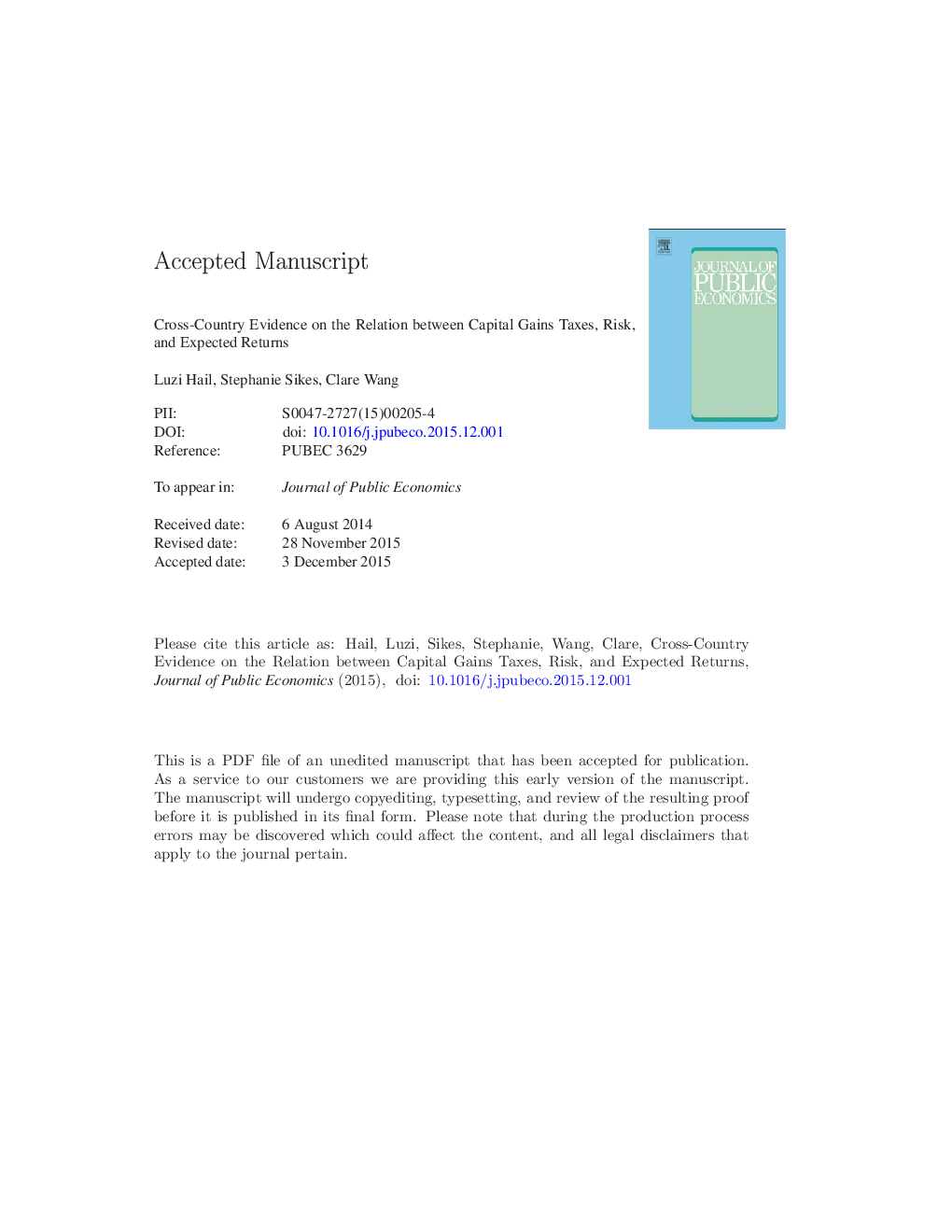| Article ID | Journal | Published Year | Pages | File Type |
|---|---|---|---|---|
| 5101803 | Journal of Public Economics | 2017 | 63 Pages |
Abstract
This study empirically examines the role of risk sharing between taxable investors and the government on the relation between capital gains taxes and expected returns. Specifically, using an international panel from 26 countries over the period 1990 to 2004, we find evidence that the general positive relation between capital gains taxes and expected returns becomes weaker or even reverses when (i) a firm's systematic risk is high, (ii) the market risk premium is high, or (iii) the risk-free rate is low. The results are particularly pronounced in countries with substantive changes in tax rates, more trust in government institutions, less integrated and less liquid capital markets, and lower foreign institutional ownership as well as around substantive increases and decreases in the risk parameters. We corroborate our findings in a single country setting, using the 1978, 1997, and 2003 capital gains tax rate changes in the United States as events. Our results underscore the importance of macroeconomic and firm-specific factors in determining the effect of tax capitalization, and suggest that tax rate changes can sometimes have opposite valuation implications than what policymakers have in mind.
Keywords
Related Topics
Social Sciences and Humanities
Economics, Econometrics and Finance
Economics and Econometrics
Authors
Luzi Hail, Stephanie Sikes, Clare Wang,
